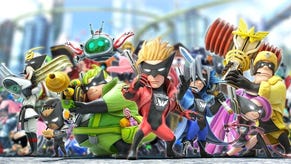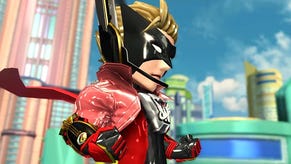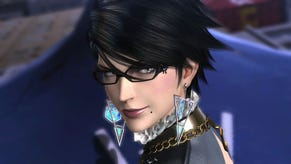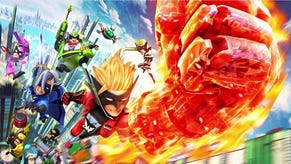Wonderful 101 and a World Without Genres
Hideki Kamiya talks about creating action games that don't fit into neat boxes, and the Nintendo-flavored origins of Wonderful 101.
This article first appeared on USgamer, a partner publication of VG247. Some content, such as this article, has been migrated to VG247 for posterity after USgamer's closure - but it has not been edited or further vetted by the VG247 team.
Platinum Games seems to have formed a small partnership with Nintendo, and the initial fruits of their labor -- the manic superhero action game Wonderful 101 -- will be arriving soon. In a way, this is familiar territory for producer Hideki Kamiya, who made a similiarly Nintendo-exclusive sentai-themed action game nearly a decade ago with Viewtiful Joe. Thematic, business, and logo connections aside, though, Wonderful 101 has very little in common with its predecessor. But it did begin life as a Smash Bros.-style Nintendo mascot game....
USgamer: I haven't really had much of a chance to play Wonderful 101 -- how would you describe it to someone like me, who only knows it from the demo?
Hideki Kamiya: First, in introducing the game, I like to describe it as a game where you get a lot of characters together. That, initially, can come off as a style that's not really very common, which ultimately results in users not quite understanding what kind of game it is. But I think it's important to know that it's a very fundamental and intuitive type of action that's built into the game. If you try it, you'll understand and get around some of those misconceptions about what genre it is or what kind of game it is. I'd like to make people feel comfortable. It really is a simple action game.

USG: It does seem very different from the work that I typically associate with you, which tend to be focused on a single character with very direct action – games like Bayonetta, Rising, that sort of thing. They tend to be about evasion and about very direct conflict with characters. That sort of connection between the player and the character.
HK: Initially, for instance with Bayonetta, it started with the idea of creating this ultimate 3D battle action game. That was a focus from early on. This time around, there isn't necessarily a genre associated with it. The background is initially getting this sort of directive from the president of Platinum, Mr. Minami, with the idea of bringing together a large group of, for instance, some all-star characters like Nintendo characters or other popular characters. That was the launch point for what the plan, the design of the game ultimately became.
With that initial launch point of not necessarily having a genre, but getting this order to take these popular characters and put them in a single game, the question that came to mind was, "How do you make something that appeals to all sorts of different fans out there?" There are lots of fans and they all have different interests and different attachments to different characters. Up until now, there have been lots of games that focus on a collection of characters. Who do you use and when they appear – there are lots of conditions within the game that make it an uneven experience depending on your interests. So taking that question about how to please all the fans evenly, the idea came up to put them all on the screen at the same time. That's where the design and the idea for the game was born.
USG: You mentioned something about the use of Nintendo characters, but from what I've seen of Wonderful 101, it's all original characters. So I take it that the design of the game changed at some point. Can you talk about where the Nintendo characters went to?
HK: The game, as you know it now, obviously features these situations where the characters are uniting to form objects. One example of that is how they get together to make bridges. Initially there was an idea drawn up where, for example, we would get Nintendo characters – such as Yoshi and Luigi and Wario – to form up and make a bridge in a scenario where Mario would walk over them. When that design was introduced to Nintendo, there were some reservations about how possible that would be to implement throughout an entire game. So there was a time after that when the project was put on hold and I was working on another project. But when that other project was put on the shelf as well, I came back and revisited the idea for 101. The game idea itself was really appealing. And so I thought, "Rather than focusing on Nintendo characters, something that I have an affinity for – superheroes – might be something more well-oriented to the game idea itself."

USG: Did you gravitate immediately toward the masked henshin-type characters when you started to think superheroes? This is kind of a Power Rangers-style rainbow-colored pantheon of characters. Was that your first instinct?
HK: First, as a base reference, what's known here as the Power Rangers style you mentioned – that Japanese henshin aesthetic or convention – was something that was a base point. Having those five rangers – red, yellow, green, blue, pink – that style is something that's appealing and something I personally have an affinity for. So taking that idea of having five heroes, a group of heroes, that matched with the concept of the game, having a group that joins together to fight. The idea came, then – okay, what if instead of five of these guys, there were 100 of these heroes fighting together? That would be pretty amazing and pretty powerful. That sort of inspiration was almost a comical type of thing. So while there was this Japanese superhero influence and inspiration, I didn't necessarily insist on following through on that aesthetic. Consulting with the character designer, Ms. Okura, the decision went from there to take it into a more original direction.
Then, where that direction ended up going, is from that Japanese superhero vibe to an American comic book-style vibe.
USG: Regarding those reservations about the use of Nintendo characters, can you get a little more detailed about that? What were the concerns about using Nintendo characters?
HK: Well, I'm not a Nintendo employee, so you can take my comments on this for what they're worth. But the initial Smash Bros., for example, a game that uses Nintendo characters – I believe Mr. Iwata was involved early on as a producer there – with all of these characters coming together, they each have their own respective direction and purpose within the game. They're concepts that can be very difficult to unite and put into a consistent formula like they are in Smash Bros. Mr. Iwata obviously worked hard to get the right kind of approvals and make sure that all of those conflicting elements came together in a cohesive package. Now, in this form – in the game proposal that I was working with – it just seemed to be a bit of stretch to be able to have the variety of gameplay in this idea. It was a stretch to be able to implement them within that design.
USG: You mentioned that the game was put on hold for a while. Was this always seen as a Wii U game, or does this mean it actually started before you knew about Wii U?
HK: Initially, it was based on the idea of using these Nintendo characters. At the time Wii U hadn't been announced yet and there was no knowledge of it. I can't say with certainty, but I believe this was something that we think of potentially for Wii. And so it was put on hold. Then, one year later, when we came back with the idea of creating this as a superhero game… At that time it wasn't necessarily based on any specific platform. But when we took it to Nintendo, the discussions went from there, and we decided to put it on Wii.
USG: So it wasn't very far along in development when you put it on hold? It didn't really change from the early concept of the game to what came out on Wii U?
HK: Initially, we had a design document to present to Nintendo, presenting the game as a game that used Nintendo characters. It was determined at that point that it might be difficult to implement. That's when it was put on hold and shelved. So later, when we came back to it, it hadn't had any development put into it yet. That's where development took off.
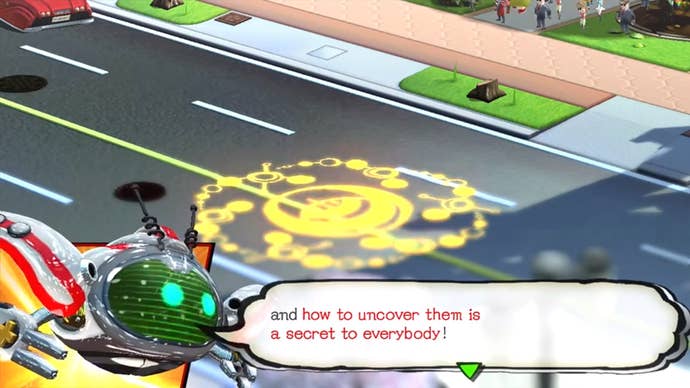
USG: You mentioned that the game doesn't really have a genre. It seems like pretty much any game you see these days fits pretty neatly into a genre, or brings together ideas from several genres. Can you elaborate more on that?
HK: Personally, I don't really draw lines between genre types. I don't really think, when I'm coming up with game ideas, of a particular genre. Mostly I try to just find ideas that are interesting and then expand on those, without the limitations of a genre.
USG: In games that tend to have a lot of variety, it's usually either difficult to get your head around all the different ideas, or else the game always holds your hand. I feel like the need for accessibility and player freedom is a tricky balance that people often don't get right.
HK: The balancing and using tutorials to introduce all these different elements was something that I considered hard. I had to think about it a lot. But essentially, at its core, this is an action game. It's an action game that we've made accessible for a lot of players and for more casual users. On the other hand, for advanced players, there's a lot built into the game to appeal to that sort of player. So from the tutorial perspective and balancing all those different elements of the game, at the very minimum we've put in enough to help people simply enjoy it on a very light level, just the fundamental action part of the game. That should really shine through. However, for players who like to take it to the next level or go a little bit deeper… This addresses your question about how you balance all these different elements and tutorials. Those players are going to discover, "Oh, I can do this. I can do that." The element of discovery is something that helps make it a cohesive package. I really relate to that hardcore gamer because I'm one myself. But at the same time, I wanted to be able to show the very minimum to more casual players, so they could at least enjoy the more simple action elements of the game.
Continuing on from that last question, the game is out in Japan already, so I've been able to gather a lot of feedback and hear a lot of reactions on the internet and whatnot. I'm hearing from players that they really enjoy being able to jump into a game with a low threshold and enjoy it. But I'm really pleased to hear that hardcore players are coming in and discovering all of these elements that we put in to make it more replayable. They didn't realize the depth that was built into the gameplay. Part of that is because the aesthetic of it has this colorful pop image, which can sort of create different impressions. But fortunately, as designed, a lot of those things are being discovered now by the more hardcore players.


